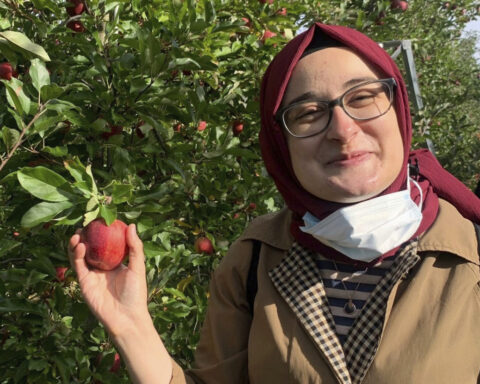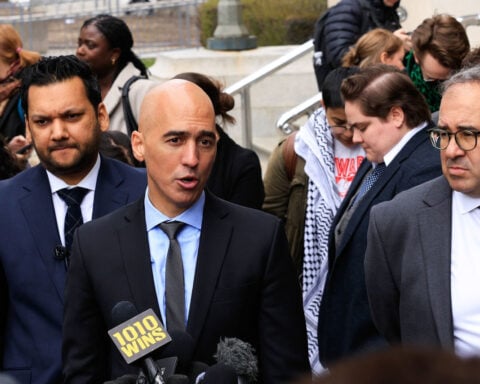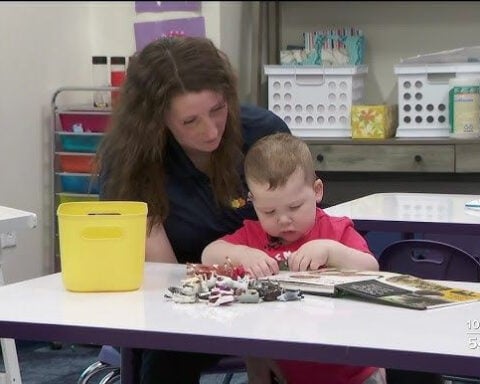Identifying with an activity is different from actually doing it.
For example, 49% of Americans play video games, but only 10% identify as gamers.
According to a recent survey we conducted, there’s also a small gap between reading activity and identity for younger readers: 61% of Generation Z and millennials have read a print book, e-book or audiobook in the past 12 months, but only 57% identify as readers.
And yet there was a puzzling aspect of our results: The 43% of Gen Z and millennials who didn’t identify as readers actually said they read more print books per month than Gen Z and millennials overall.
In other words, young people who don’t identify as readers are reading books at a higher rate than their generational cohorts as a whole.
Why?
Our best guess is that “reader” is an identity, not a behavior. And that identity is buttressed by involvement in book clubs, engagement with social media communities such as Booktok and Bookstagram, and access to libraries and bookstores.
Building bookish communities
Identities of reader, writer and fan seem to reinforce each other.
Millennials and members of Gen Z who identify as readers are also more likely to be writers and participate in fandom.
Community is key to all of these identities. For example, two of the top reasons millennials and members of Gen Z identify as fans are the fact that they’re “part of a fan community” and are able to “meet others like me.”
Every August, the Edinburgh Book International Book Festival in Scotland – the largest book festival in the world – puts on an entire month of events around books, authors and readers.
During the 2023 event, which we attended, you could see attendees clamoring to see writers like Alice Oseman, author of the bestselling “Heartstopper” graphic novels.
We heard fans waiting in that line talking about how Oseman’s series featured the first queer characters they’d encountered in a book. Readers came to the festival with friends and family, and made new friends and connections at the event. The passion was palpable.
What ‘counts’ as reading
But does a graphic novel like “Heartstopper” even count as “real” reading?
If the National Endowment for the Arts definitions from the early 2000s are to be believed, then no – unless it’s reading literature for leisure, it must not be “real” reading.
And some millennials and members of Gen Z may believe that the reading they are doing isn’t real reading. But a narrow definition of what counts as reading ignores the love Gen Zers and millennials have for content such as graphic novels, manga and comics.
In our study, 59% said they would prefer a graphic version of a story over text-only. And let’s not forget audiobooks, which 34% of Gen Zers and millennials prefer over text-only. Millennials and members of Gen Z are also reading nonfiction or reading for school and work, rather than pleasure.
In a separate study from 2020, we found that 83% of American readers read books for reasons other than entertainment, such as school, work or self-improvement.
What makes a reader?
More Gen Z and millennial women identify as readers, so there could be gender differences at play: Perhaps young men, no matter how much they read, are hesitant to closely identify with an activity they see as the purview of women.
Socioeconomic status may also factor into whether someone feels they can claim a readerly identity. Gen Zers and millennials who didn’t identify as readers were less likely to have a job in the past 12 months and earned less money.
So it turns out that identifying as a reader is often about community, wealth and gender – and what counts as reading – than it is about how much someone actually reads.
Perhaps there can be an effort to broaden the definition of “reading” – yes, audiobooks and comics count – and to build bookish communities beyond places such as Bookstagram and BookTok. And being a reader can be more than loving classic literature, though certain social media trends, such as “Reading Like Rory” – a BookTok phenomenon centered on the literary classics read by Rory Gilmore of “Gilmore Girls” – amounted to just that.
If young people were to see being a reader as simply enjoying and engaging with stories, how many of them would start to call themselves readers after all?
Kathi Inman Berens receives funding from the Delmas Foundation.
Rachel Noorda receives funding from the Delmas Foundation.
Source: The Conversation

 Trump has begun another trade war. Here's a timeline of how we got here
Trump has begun another trade war. Here's a timeline of how we got here
 Canada's leader laments lost friendship with US in town that sheltered stranded Americans after 9/11
Canada's leader laments lost friendship with US in town that sheltered stranded Americans after 9/11
 Chinese EV giant BYD's fourth-quarter profit leaps 73%
Chinese EV giant BYD's fourth-quarter profit leaps 73%
 You're an American in another land? Prepare to talk about the why and how of Trump 2.0
You're an American in another land? Prepare to talk about the why and how of Trump 2.0
 Chalk talk: Star power, top teams and No. 5 seeds headline the women's March Madness Sweet 16
Chalk talk: Star power, top teams and No. 5 seeds headline the women's March Madness Sweet 16
 Purdue returns to Sweet 16 with 76-62 win over McNeese in March Madness
Purdue returns to Sweet 16 with 76-62 win over McNeese in March Madness








